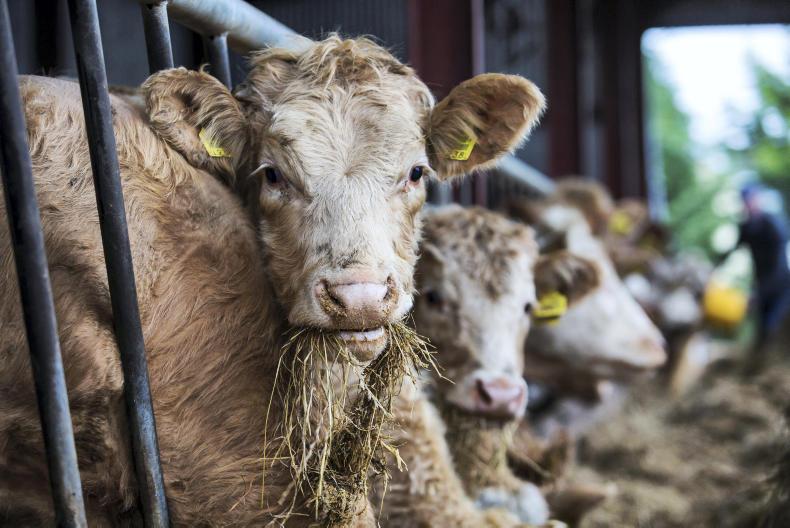With some silage analysis coming back poor and concentrates relatively good value, many farmers are choosing to go the route of ad-lib meal feeding rather than a longer finishing period on grass silage and meal.
Where starting from a low base, animals should be built up to ad-lib feeding over a period of three to four weeks.
If this transition takes place too quickly, the bugs in the rumen will not change quickly enough and this will greatly increase the chances of acidosis.
This can then lead to laminitis and it will greatly reduce thrive and will mean that the build-up phase will have to start from the beginning. There is merit in including feed buffers in diets at very high meal feeding rates. They will help to regulate the pH in the rumen.
High fibre
Ensure they have access to a high fibre source and a good clean water supply. This is critical, especially for bulls.
Drinker size can be an issue in some sheds where they don’t fill quickly enough and the animals don’t wait to take their full requirement of water.
This will have a knock-on effect on feed intake. Check the drinkers daily for faecal material and clean out if necessary.
Trough management is critical to achieving high levels of animal performance. Once built on to ad-lib feeding, the volume of feed offered should be targeted slightly above average intake levels to prevent feed going stale.
Have a vermin control plan in place for birds and rodents. For animals approaching slaughter, monitor liveweight to avoid issues with overweight carcase.
Read more
Beef management notes: clipping cattle
Beef management notes: pneumonia
With some silage analysis coming back poor and concentrates relatively good value, many farmers are choosing to go the route of ad-lib meal feeding rather than a longer finishing period on grass silage and meal.
Where starting from a low base, animals should be built up to ad-lib feeding over a period of three to four weeks.
If this transition takes place too quickly, the bugs in the rumen will not change quickly enough and this will greatly increase the chances of acidosis.
This can then lead to laminitis and it will greatly reduce thrive and will mean that the build-up phase will have to start from the beginning. There is merit in including feed buffers in diets at very high meal feeding rates. They will help to regulate the pH in the rumen.
High fibre
Ensure they have access to a high fibre source and a good clean water supply. This is critical, especially for bulls.
Drinker size can be an issue in some sheds where they don’t fill quickly enough and the animals don’t wait to take their full requirement of water.
This will have a knock-on effect on feed intake. Check the drinkers daily for faecal material and clean out if necessary.
Trough management is critical to achieving high levels of animal performance. Once built on to ad-lib feeding, the volume of feed offered should be targeted slightly above average intake levels to prevent feed going stale.
Have a vermin control plan in place for birds and rodents. For animals approaching slaughter, monitor liveweight to avoid issues with overweight carcase.
Read more
Beef management notes: clipping cattle
Beef management notes: pneumonia






 This is a subscriber-only article
This is a subscriber-only article










SHARING OPTIONS: